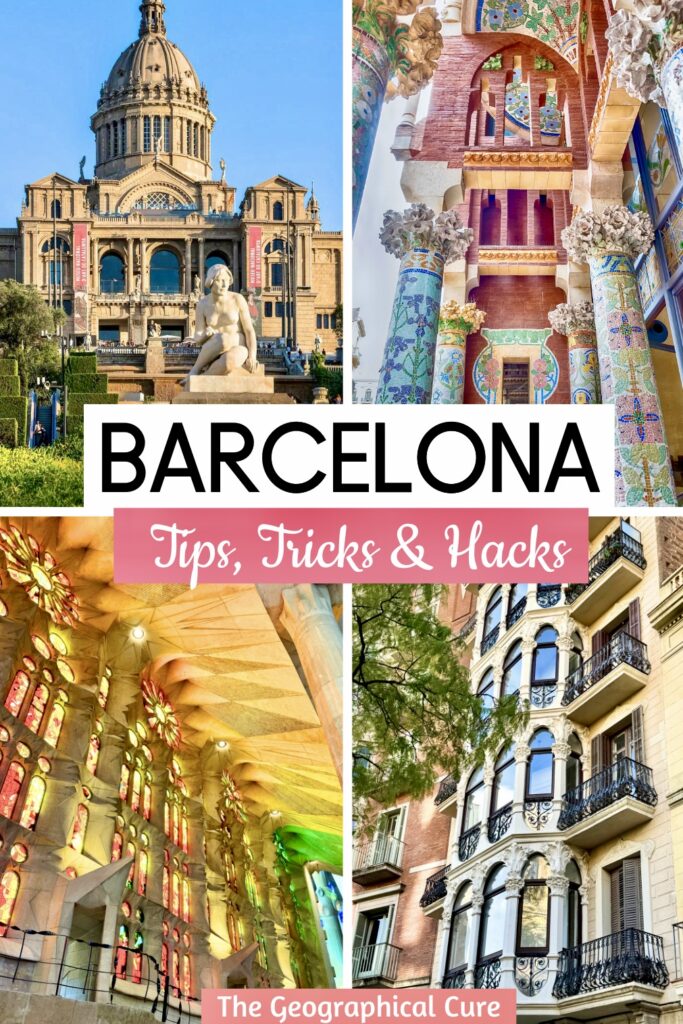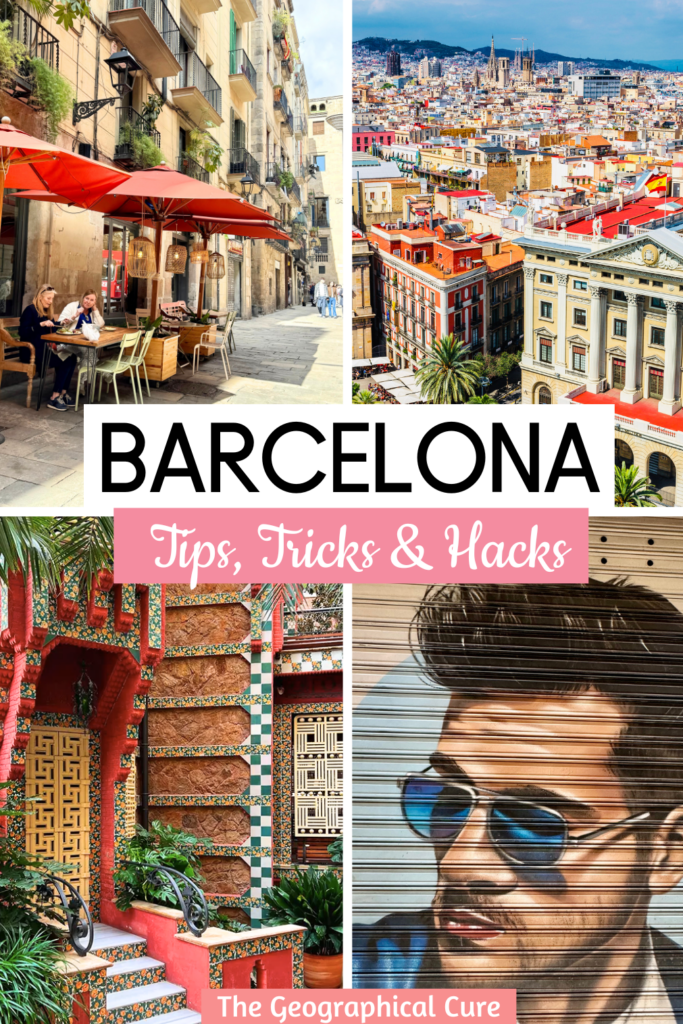Barcelona is a city with a vibrant culture, stunning architecture, and bustling street life. It’s packed with age old bodegas, bohemian neighborhoods, and cool cultural spaces.
If you’re planning a trip to the Catalan capital, you’ll want to make the most of every moment.
In this blog post, I share essential tips, tricks, and hacks to help you navigate Barcelona efficiently and enjoyably.
From avoiding the crowds at popular attractions to finding the best local dining spots, I’ve got insider tips to help you along in this dynamic city.
Arts & Culture
Culture comes at a price in Barcelona.
The Gaudi house museums like Casa Batllo or La Pedrera are between 20 and 30 euros. Maybe more if you pick a fancy tour with extras or a nighttime sound and light show.
But check your preferred museum’s website. They are open for free at least one afternoon a month.
To see which museums you want to visit, check out my guide to the best museums in Barcelona and my guide to Gaudi architecture.
Here’s a quick look to help you decide what museum to visit:
- Picasso Museum: early Picasso artworks
- MNAC: centuries of Catalan art, with amazing Romanesque frescos
- MACBA: cutting edge contemporary art
- MOCO: modern and contemporary art
- Miro Foundation: complete overview of Joan Miro
- Caixa Forum: contemporary art
- History Museum: Roman ruins
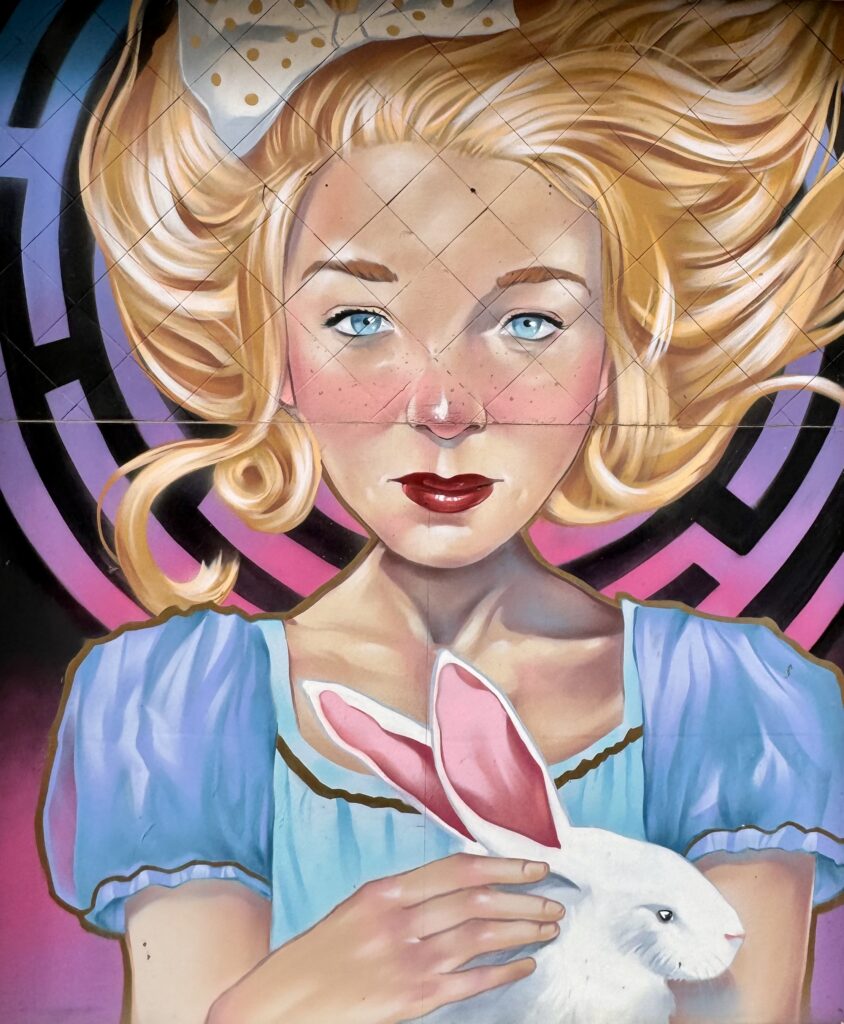
The most popular museum, by far, is the Picasso Museum in El Born. You’ll definitely need to pre-book a skip the line ticket or wait in endless lines.
If you want something edgier, try out a street art tour.
Many museums are also included in the Barcelona Articket and the Barcelona Card, to help you save a few dollars.
The Articket covers the six most important museums in the city and is valid for three months.
The Barcelona Card is a handy pass. It lets you hop on and off public transport like the metro and buses, even to and from the airport.
Plus, you get free or cheaper entry to loads of attractions and museums, and discounts at some restaurants and shops. You can grab it for 2, 3, 4, or 5 days, making it a great way to save on transport and sightseeing during your trip.
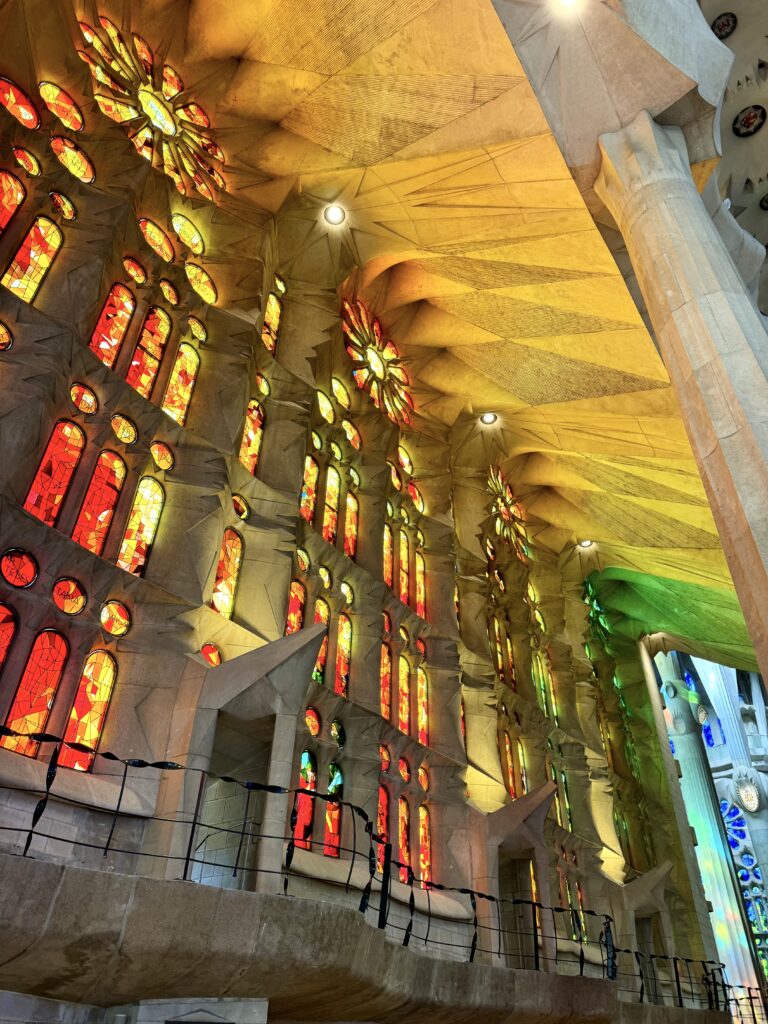
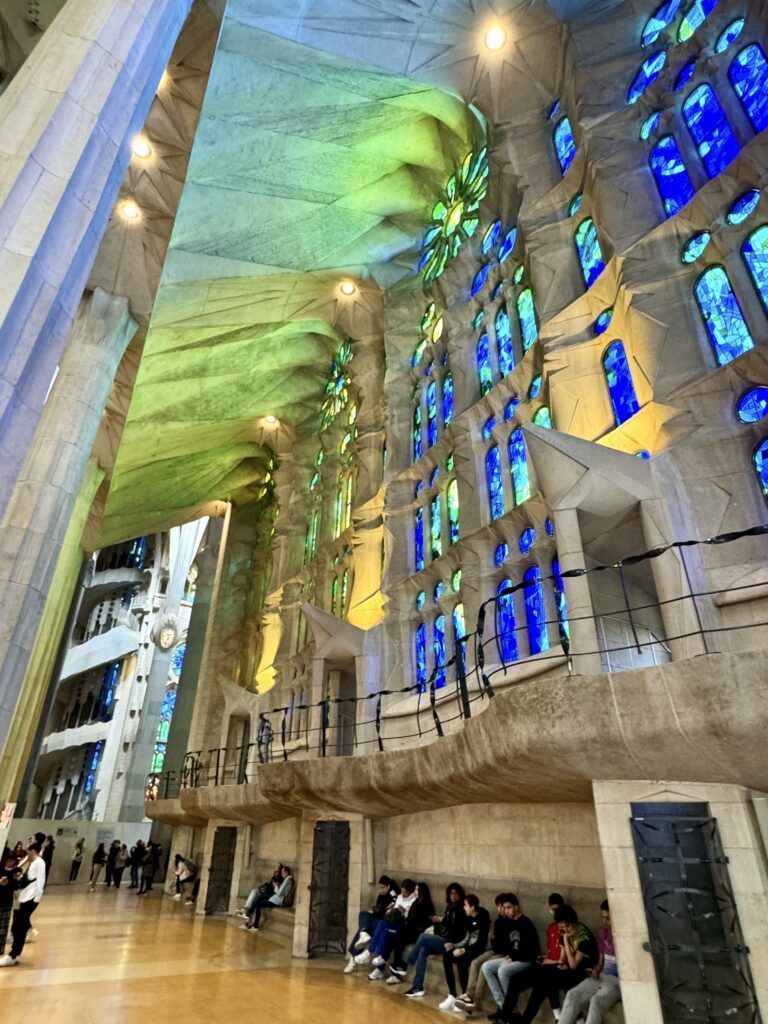
Mondays
Mondays are a rest day for many sites, so plan your trip carefully around this fact.
But fear not! Plenty of places make an exception to this rule and you can pivot to one of them. Those include:
- Caixa Forum
- Park Guell
- Sagrada Familia
- Casa Batllo
- La Pedrera
- Chocolate Museum
- Palau de la Musica Catalana
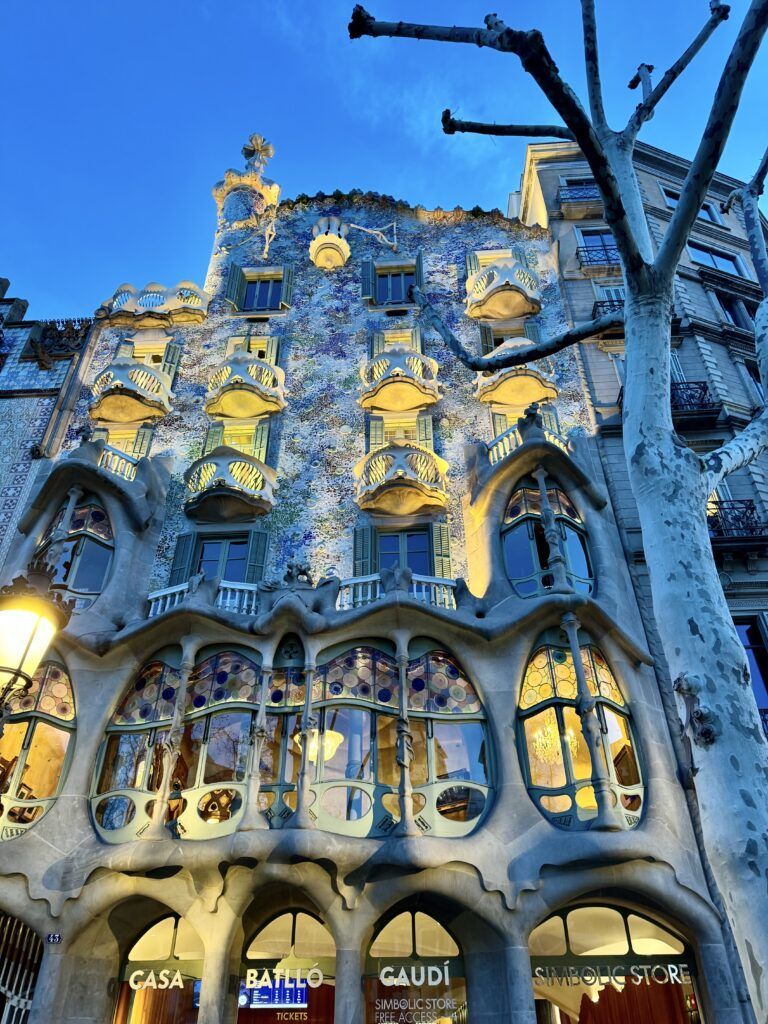
What To Book In Advance
Barcelona is an incredibly popular city and its must see sites, including the Modernist stars, book up quickly or come with long lines.
If you buy tickets in advance or have a pass, you’ll basically walk right in. (Except to Sagrada Familia, which has airport type security.)
Given how precious your vacation time is, here are some things you should consider booking in advance, especially from March to October:
- Sagrada Familia – Click here to get the entry tickets
- Park Guell – Get Park Guell monument area entry
- Casa Batllo – Click to buy entry tickets
- Le Pedrera – Click to buy entry tickets
- Montjuic Cable Car – Book tickets for Cable car ride to Montjuic
- La Boqueria Market tour – Check this tour here
- Flamenco Shows – Reserve your seats for a flamenco show
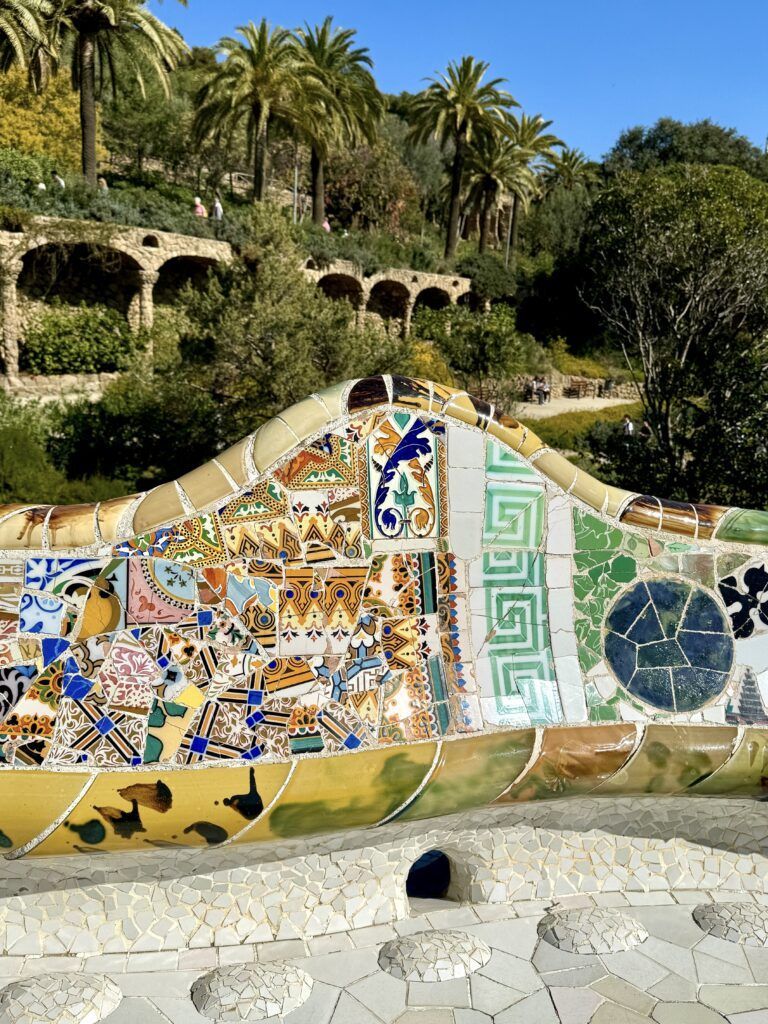
Getting To Barcelona
To get from Barcelona Airport to the city center, you have a few options:
- RENFE Train: Trains run approximately every 30 minutes and take you directly to the city center.
- Taxi: Taxis are available outside the terminal, offering a convenient way to reach the city center in about 20-30 minutes.
- Private Transfer: You can also arrange a private transfer from the airport to your hotel for added comfort and convenience.
If you arrive by train, you can take the metro or a taxi to get into the city.
Getting Around
Barcelona is essentially divided into a handful of neighborhoods.
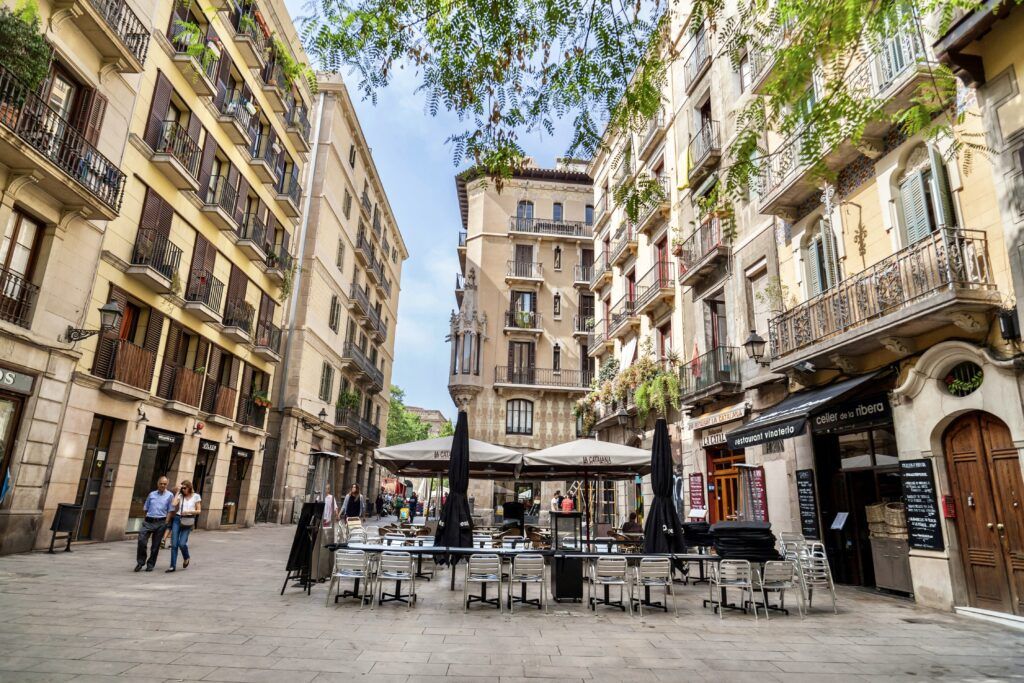
Most of Barcelona is organized on a grid system, particularly Eixample. The older windings streets of the Gothic Quarter, El Raval, and El Born are more confusing.
Barcelona is not all that big, so it’s easy to get around on foot. Some steep neighborhoods, like Montjuic, have escalators to take the edge off.
Biking is also popular in Barcelona and there are plenty of bike lanes. The traffic light system also applies to bikes, so never go through a red light (even if you see others doing it!).
There is a bike sharing system, Bicing, but it’s only available for residents. But you can rent a bike at Donkey Republic or go on a guided bike tour.
The public transport network, run by TMB, includes the metro, bus, and tram. The metro is easiest to use. But I thought the bus map was incredibly daunting, and didn’t use buses myself.
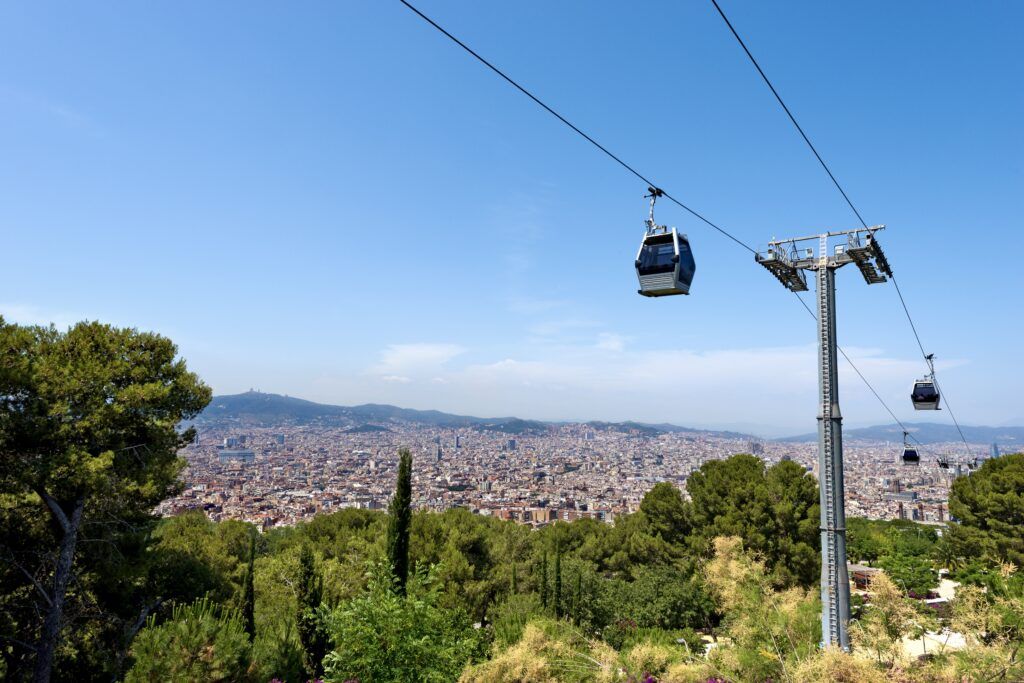
The metro runs from 5:00 am to midnight on weekdays and until 2:00 am on weekends. You can download and register with TMB’s app and use your smartphone as a contactless ticket.
You can also book the hop on hop off bus (24 or 48 hours) to get around. I’ve done this before and it was super convenient, especially for getting to Montjuic.
If all else fails, you can hail a black and yellow taxis on most corners. But there are no Ubers in the city.
To get up to Montjuic Hill, you can take the Montjuic Cable Car.
Tourist Bureau
The main office of the tourist board is in the main square, Playa Catalunya. It’s packed with maps, information, and offers services like last minute reservations.
There are also branches at the airport and Place Sant Jaume.
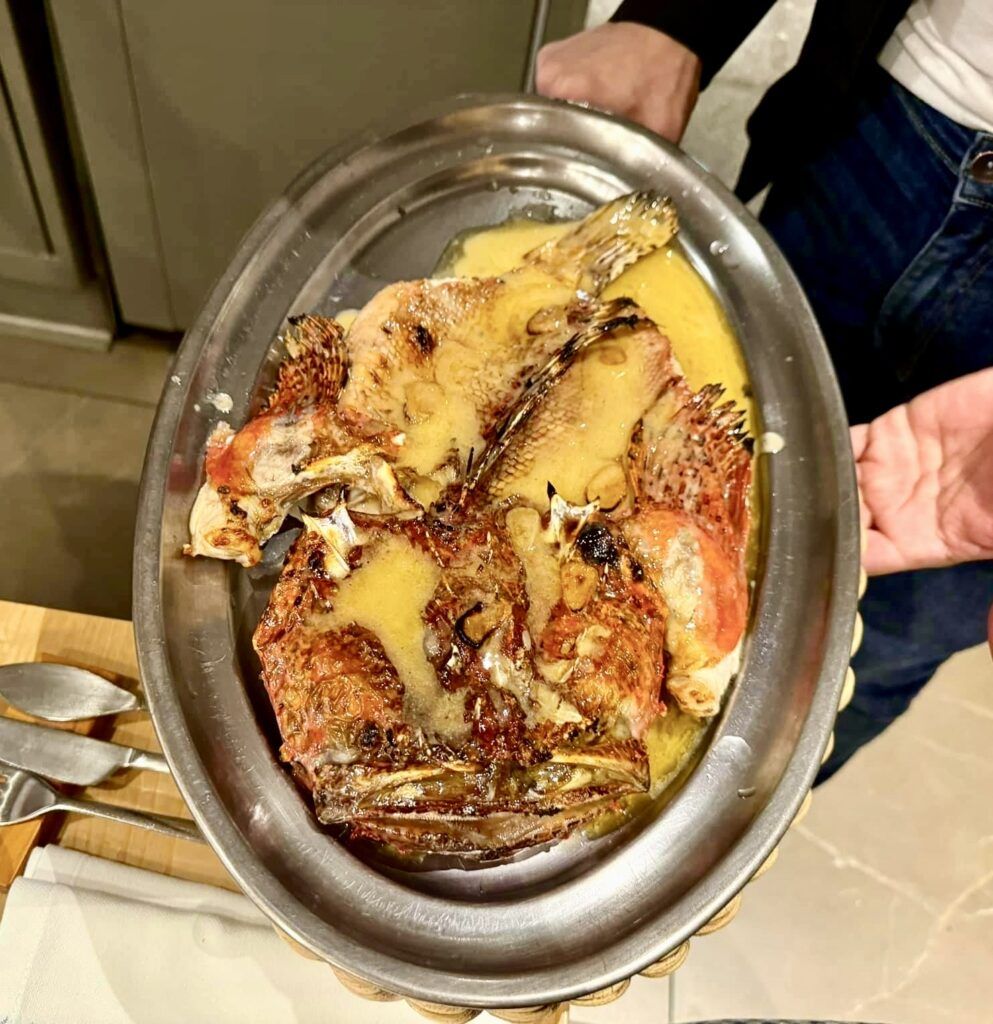

Catalan Cuisine
What should you expect to eat in Barcelona?
If you want Catalan food, the region is known for its meat dishes and seafood, sometimes happily thrown together. Catalans love their meatballs, sausages, and mushrooms.
Some dishes you can expect to find include:
- fideua (Catalan paella)
- sarro negre (black rice cooked in squid)
- jamon (the darker the better!)
- pa amp tomaquet (bread and tomato)
- botifarra amb mongetes (grilled sausage with white beans)
- bacallà a la llauna (salted cod with tomatoes and garlic)
If you are ordering tapas, menus usually include seafood (cod, tuna, squid, anchovies), olives, sausage, jamon, or croquettes. The only thing I disliked was the dog fish shark … ew!
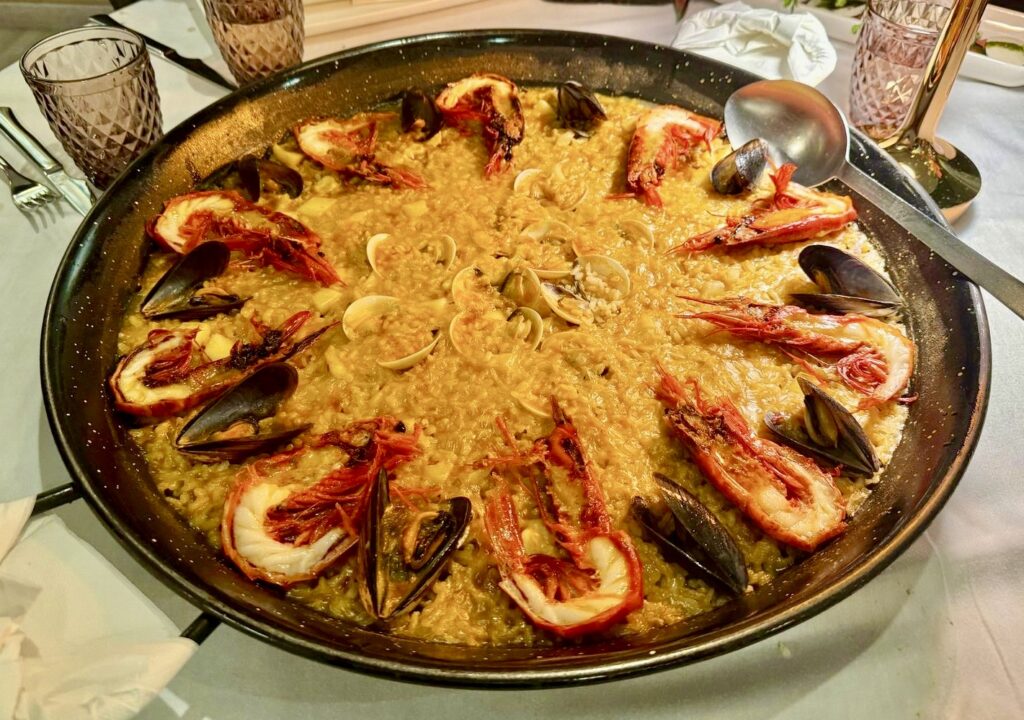
Restaurants
Eating out in Barcelona is about celebrating life. You can opt for feasts whipped up by families or creative dishes by plucky chefs.
Here are some of my favorite spots that I’ve tried over the years, broken down by type of food.
Just don’t eat on La Rambla! Almost everything there is a tourist trap.
Traditional: Petit Pau, Can Culleretes, Can Vilaro, Guadim
Creative: Onofre, Cruix, Berberna, Taberna Noroeste, Gresca
Splurge: Estimar, San Pedrito, Disfrutar, Lasarte
Vegetarian: Flax & Kale, Fat Veggies, Roots & Rolls
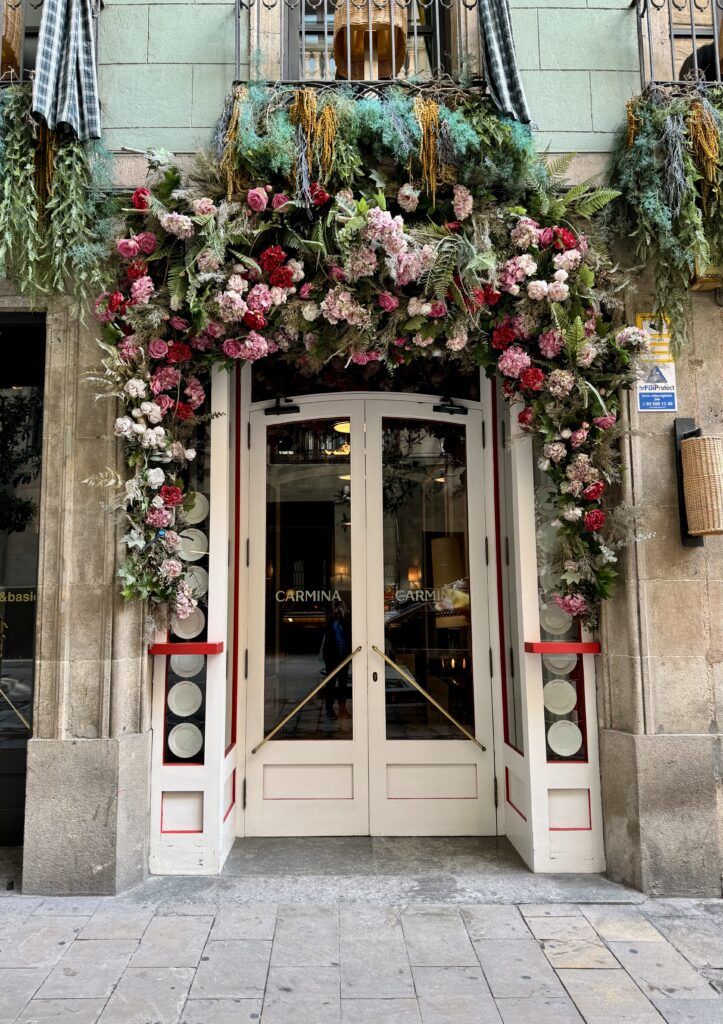
Meal Times
In Barcelona, breakfast is usually munching while hoofing it around the city. But there is a growing brunch culture in the toner neighborhoods.
You might choose from assorted tapas, eggs prepared in various styles, pancakes, and more contemporary options like avocado toast or smoothie bowls.
Check out Silan for Israeli treats or Granja Petite for classic brunch entrees.
Lunch is the main meal of the day and usually starts from 2:00 pm. You can eat earlier, especially if you’re at a market.
Dinner are light and kick off around 9:00 pm, possibly 8:00 pm. And you can always do a tapeo, which is a tapas crawl.
Another good idea for the evening is to go on a guided tapas tour. I did this one and loved it!
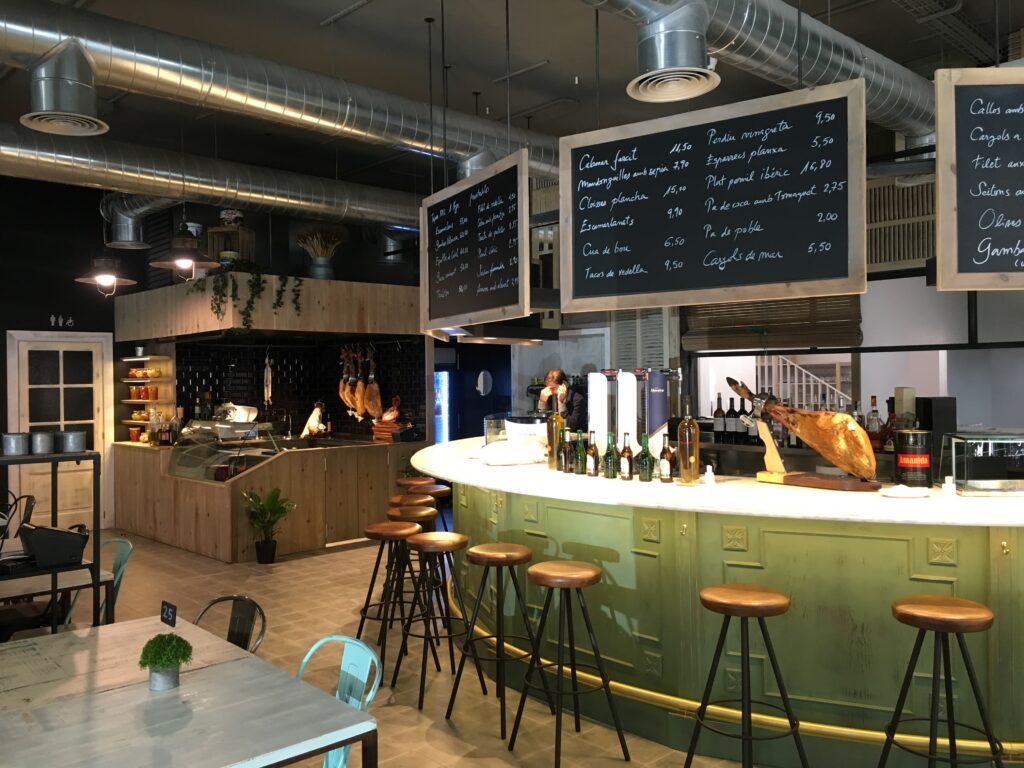
Drinks
Cafes and bars are second living rooms for Barcelonans. Locals live their lives in the bodegas. Beers are clinked after work and cocktails and vermouth sipped late at night.
If you are sitting outside, someone will come and take your order. If you are inside, you’ll generally be expected to order at the counter.
Vermouth bars are all the rage in Barcelona. The vermouth comes in all flavors and ranges from sweet to extra dry.
Check out Senior Verut in Eixample. Or get your degree in Vermouth at Vermouth University or take a vermouth tour.
There are plenty of wine bars as well. I can recommend Zona d’ombre in the Gothic Quarter and Can Cisa in El Born.
Or grab a cocktail at Bar Boadas in El Raval where the cool people go.
Markets
Barcelona is a foodie paradise and it doesn’t stop at restaurants. Around every corner, you’ll find tempting artisan shops and markets, ripe with edible treats you’ll want to devour.
The most famous market is La Boqueria on La Rambla. The locals joke that, if you can’t find an ingredient there, you need to change your recipe.
Try to arrive early in the morning before the throngs of tourists descend. Do your shopping or have a bit of everything for a lunchtime adventure.
For a treat, sit down at the counter of El Quim de la Boqueira. You’ll tuck into traditional tapas, all made from ingredients sourced at the market.
The city’s second most famous market is Santa Caterina. It stand on a medieval convent, but now boasts an elaborately colored roof.
This is a great food hall. It has kaleidoscopic displays of fruit, buckets of olives, and dishes of paella.
Another place to try in El Born is La Botifarreria de Santa Maria. It’s a meat eating establishment specializing in pork.
You can choose from ready to grill all sorts of meats, fish, and sausages. I recommend the sausages with black truffles.
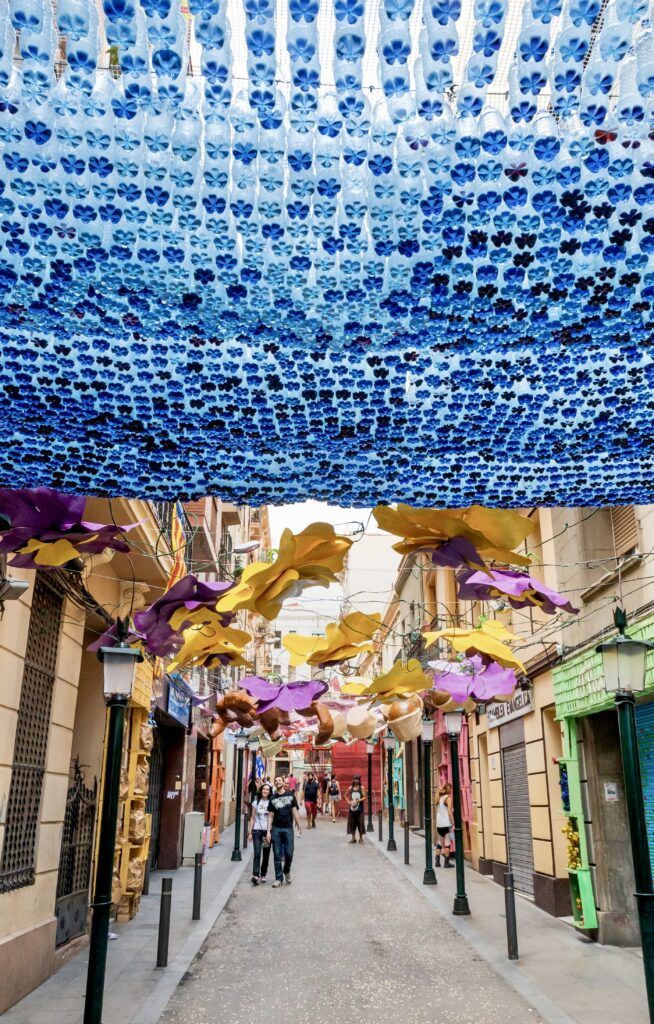
Festivals
Barcelona is a city that likes festivals. There are hedonistic festivals in summer, age old traditions in autumn, and merrymaking fun in the winter.
The biggest annual festival is the Festes de la Merce, a 4 days festival to end summer and kick off the fall.
There are fireworks, parades, giants, human towers, castle builders, dance groups, and marching bands.
Another popular festival is the Festa Major de Gracia. It draws the biggest crowds of locals.
Streets are dressed up with handmade street decorations, with the “best dressed” winning a prize. The locals pull trestle tables into the streets, which groan with food and drink.
If music is more your thing, Barcelona stages more music festivals thane person’s wallet (or liver)could handle. The city hosts Primavera Sound, Sonar, Vida, and Cruilla — to name a few.
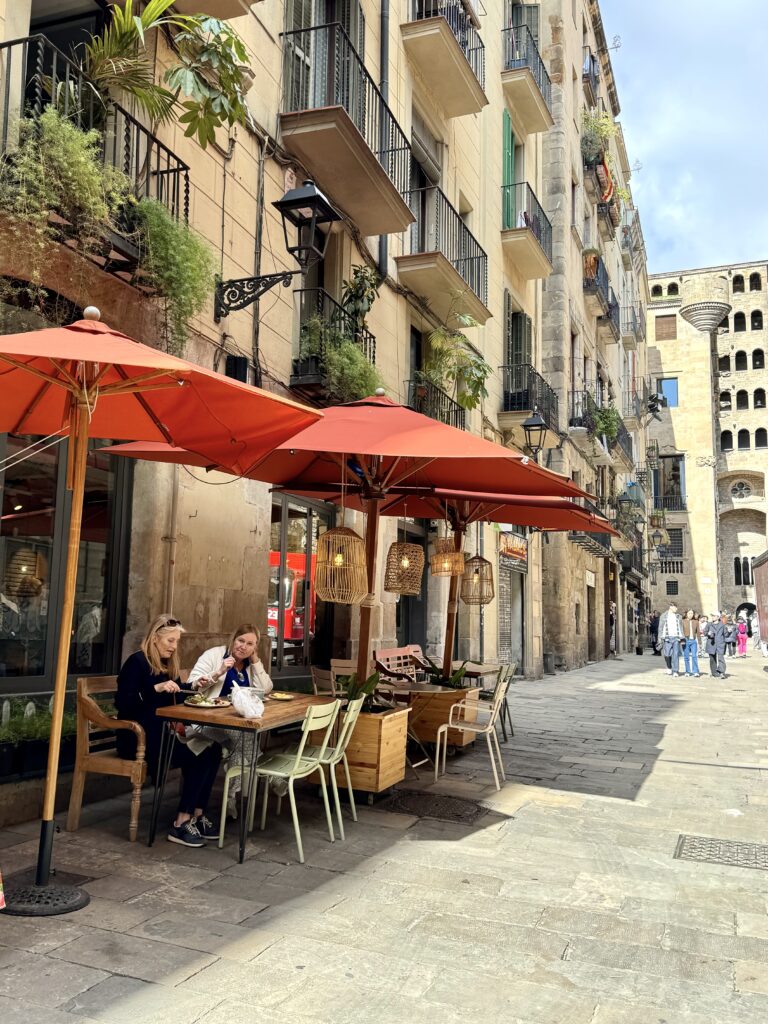
Barcelona Neighborhoods
Here’s a quick run down of the neighborhoods you may want to visit in Barcelona:
Born
This is one of my favorite barri. It’s a labyrinth of medieval streets adjacent to the Gothic Quarter. There are great restaurants, artisan shops, and attractions to see.
Among other things, you can visit the Picasso Museum, Palau de la Musica Catalana, the Chocolate Museum, and Santa Maria Del Mar.
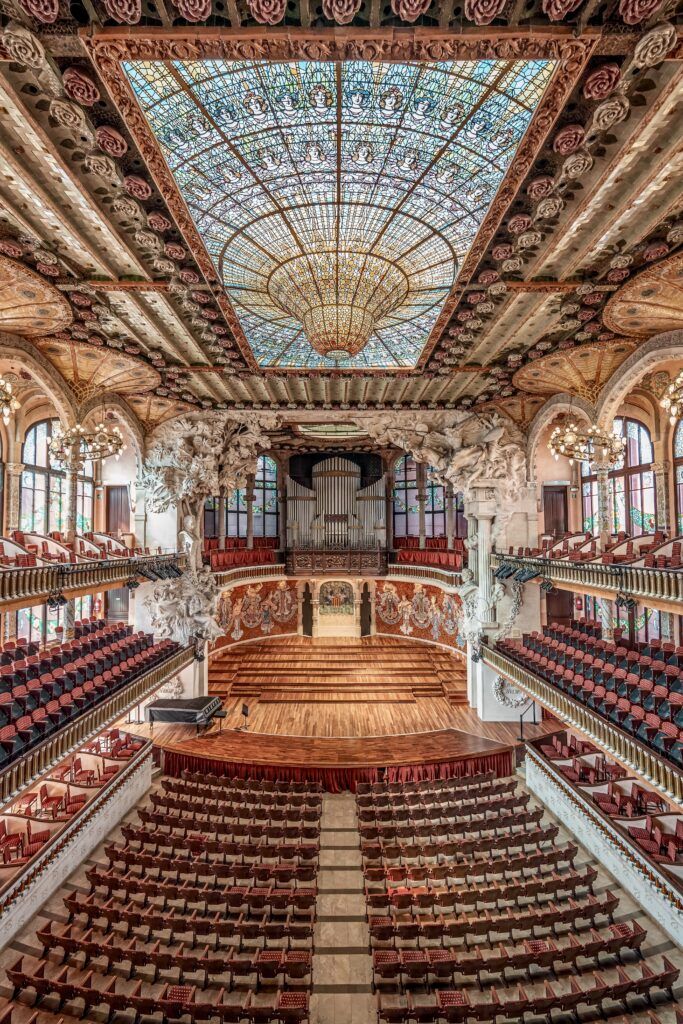
Palau de la Musica is truly one of the most beautiful interior spaces in Barcelona. It’s a Moderist concert hall, where every inch is decorated with glossy mosaics, stained glass, kaleidoscopic skylight, and sculptures.
In high season, you’ll want to book a skip the line ticket.
Eixample
This is my other favorite neighborhood in Barcelona. It’s home to all the exotic Modernist architecture. It’s a great place to stay because it’s not as loud at night as the Gothic Quarter.
It’s home to Barcelona’s toniest shopping street, the Passeig de Gràcia. There are also loads of restaurants and fancy shops. And it’s my favorite area to stay in.
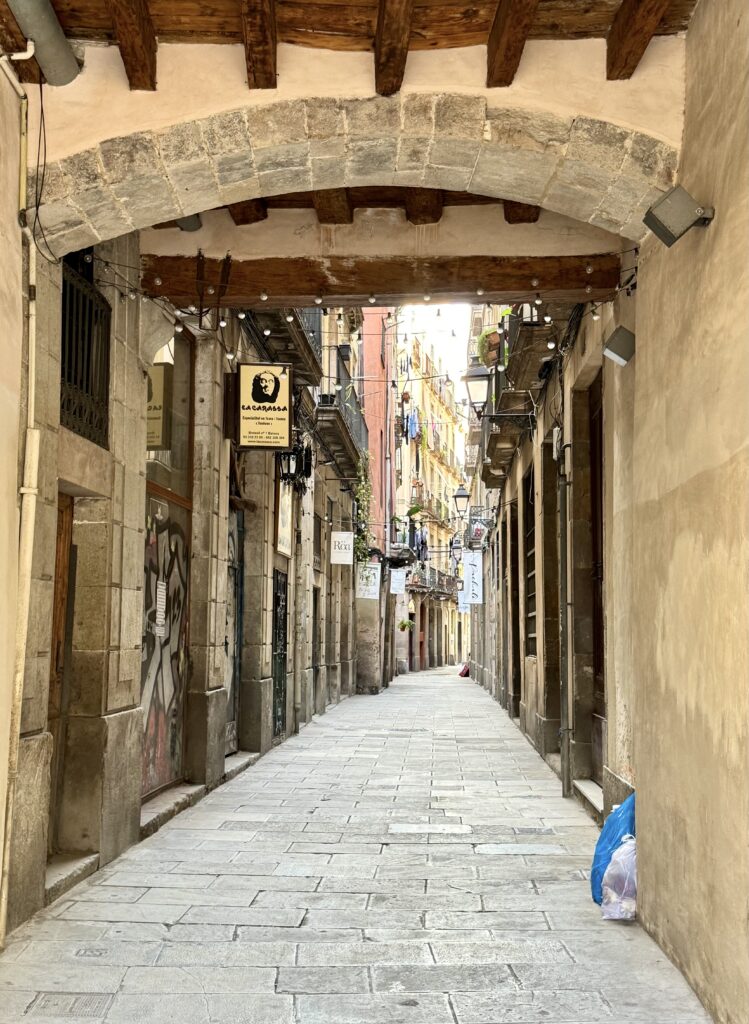
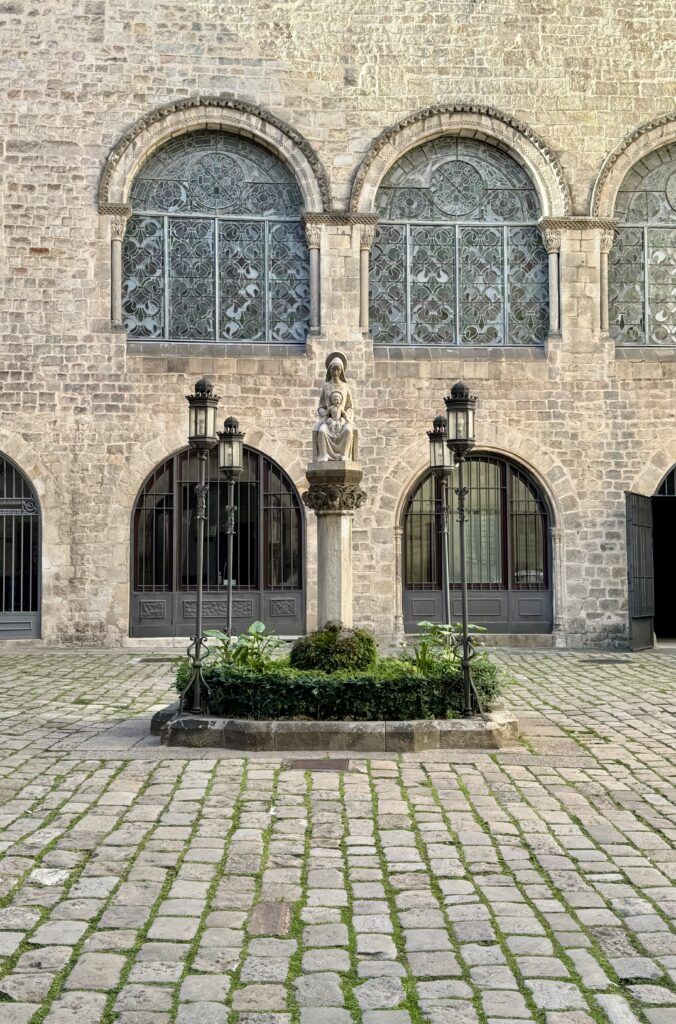
Gothic Quarter
Neighborhoods don’t come more ancient and historical than the Gothic Quarter. Roman ruins, ancient streets, and medieval Jewish quarter attract thongs of visitors.
You’ll probably want to stroll down La Ramble. The iconic boulevard stretches from Plaça de Catalunya down to the Christopher Columbus Monument at Port Vell.
It’s very touristy and crowded. You’ll want to watch your wallet and belongings here.
One of the best things to see in this area is Palau Güell. It’s one of Gaudi’s first buildings and is a beguiling combination of Moorish and Art Nouveau architecture.
Gracia
Once a village on the outskirts of town, now Gracia is a hip hangout. You’ll find organic shops, vermouth bars, and vegan cafes.
A stroll down the Gran de Gracia will take you past some stunning architecture. And Gaudi’s Casa Vicens is located in this neighborhood. It’s an absolute gem!
Montjuic
Ah, Montjuic, the stunning setting of the 1992 Olympic Games. Today, it’s more like a string of parks than a traditional neighborhood. But the city’s “Magic Mountain” sparkles today.
There are some world class museums — MNAC, Joan Miro Foundation, and the Mies van der Rohe Pavilion. You can also wander through pretty gardens and visit the Olympic sites.
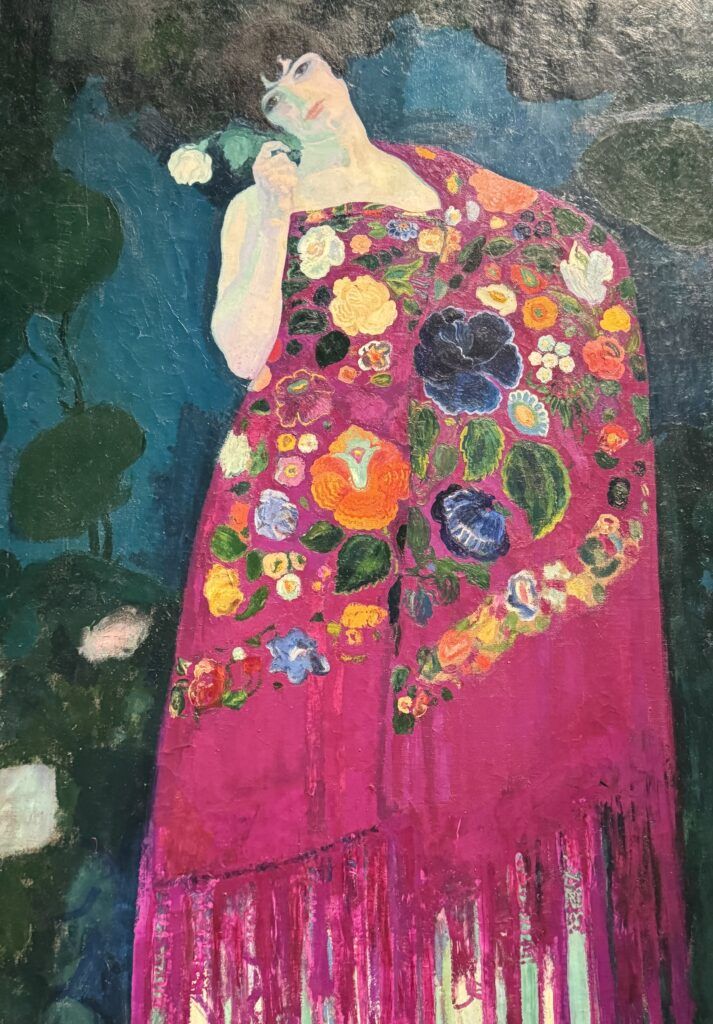
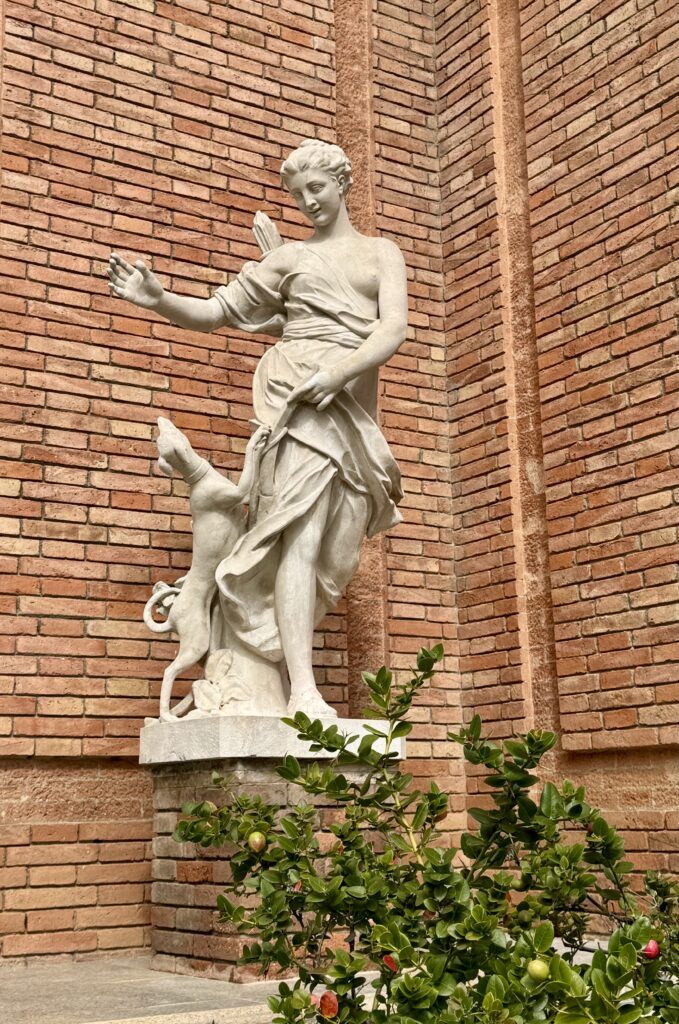
Barceloneta
Barceloneta is known for its glitzy hotels, sandy beaches, and vibrant boardwalk. It’s a popular destination for both locals and tourists.
Seafood restaurants and tapas bars line the promenade, most of them interchangeable.
Where To Stay In Barcelona
There are a plethora of hotels in Barcelona these days. Still, you should reserve in advance.
If you want to stay in the Gothic Quarter for some old world charm, Hotel Colon is the classic choice and the Mercer is an exquisite newcomer. And Hotel Habana House, in El Born, is lovely modern boutique hotel.
But you may have to contend with late night noise.
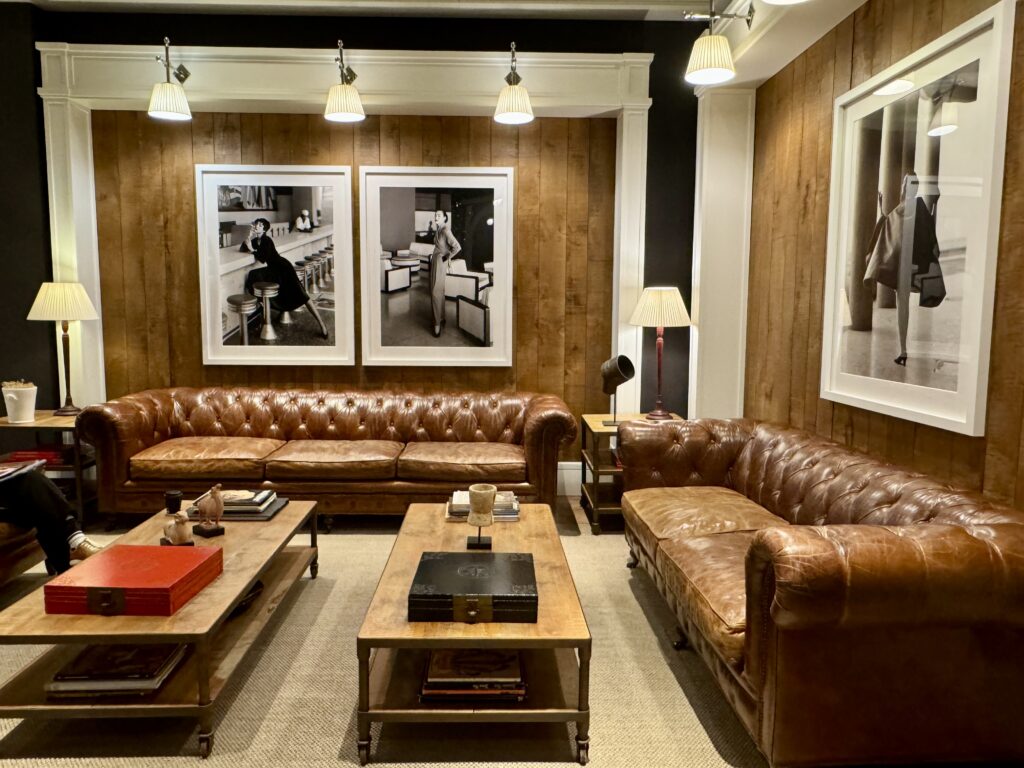
I like staying in Eixample. It’s quieter and there’s still so much to do.
Casa Fuster is an amazing Modernist building converted into a luxury hotel. The Claris is one of the city’s best hotels, known for its modern design and art collection.
If you want something more moderately priced, I recently stayed in Hotel Granvía. It has a gorgeous lobby and is very central, close to Passeig de Gràcia.
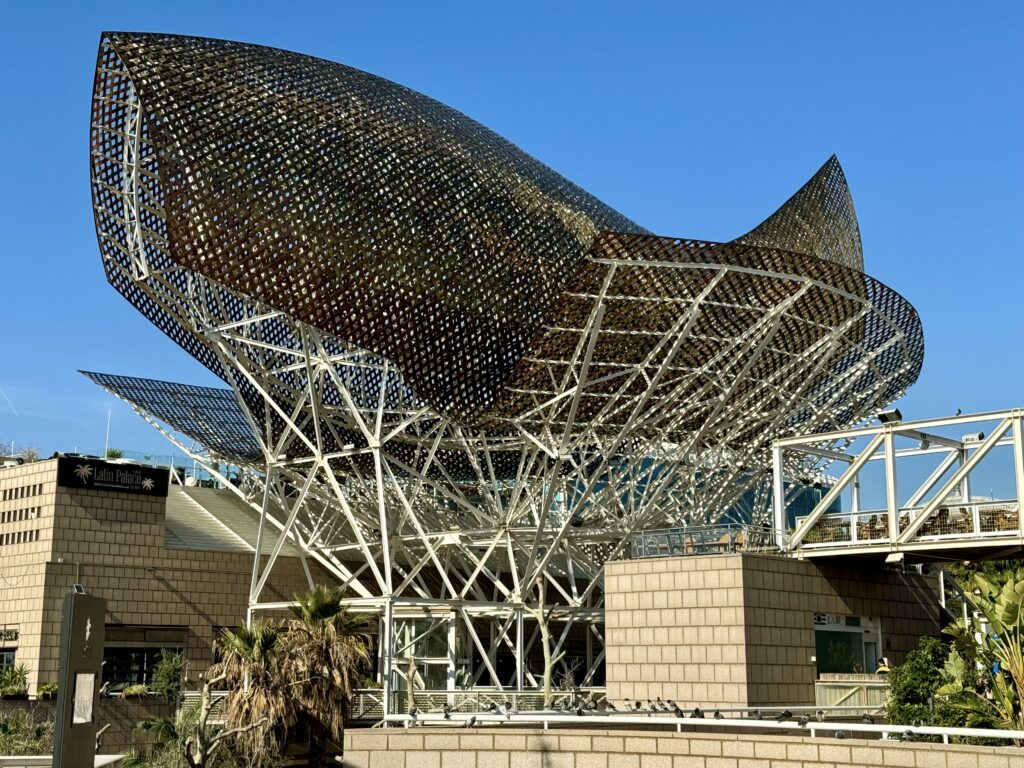
Is Barcelona Safe?
Barcelona is generally safe for tourists. But like any major city, it has areas and situations where extra caution is advised.
Petty theft, include pickpocketing and bag snatching, is relatively common.
This is especially true in crowded tourist areas such as La Rambla, the Gothic Quarter, and on public transport. One of my guides told me that Barcelona is where pickpockets learn their trade.
So, it’s best to use a money belt or a fold over purse with multiple zippers. Don’t leave your phone sitting on a cafe table or it might be snatched.
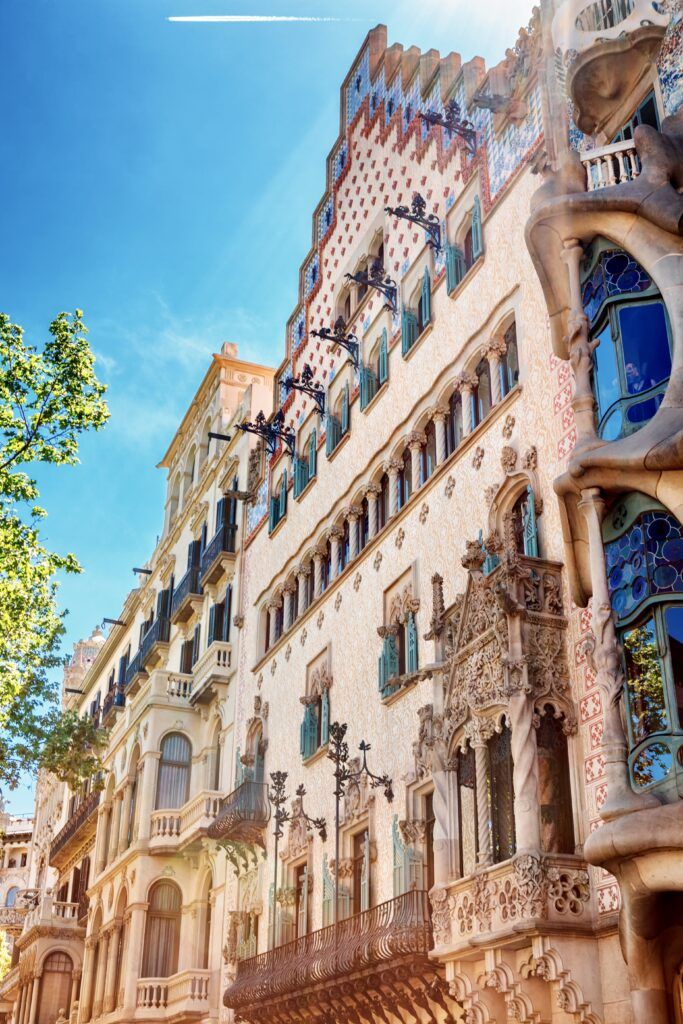
Cash and Credit Cards
Most establishments take credit cards. And the “tap to pay” or “contactless” cards are widely accepted.
Just like at home, you can also pay with your smartphone using an app like Apple Pay. This has the advantage of some extra protection for your credit card.
I always carry cash too. You’ll need it for tipping guides, small treats, checking your bags at museums, or tipping by rounding up the bill.
When possible, use a bank-run ATM located just outside a bank. The fees will be less.
When buying something with your card, it’s better to pay in euros. Credit card companies usually offer better exchange rates than local currency exchanges.
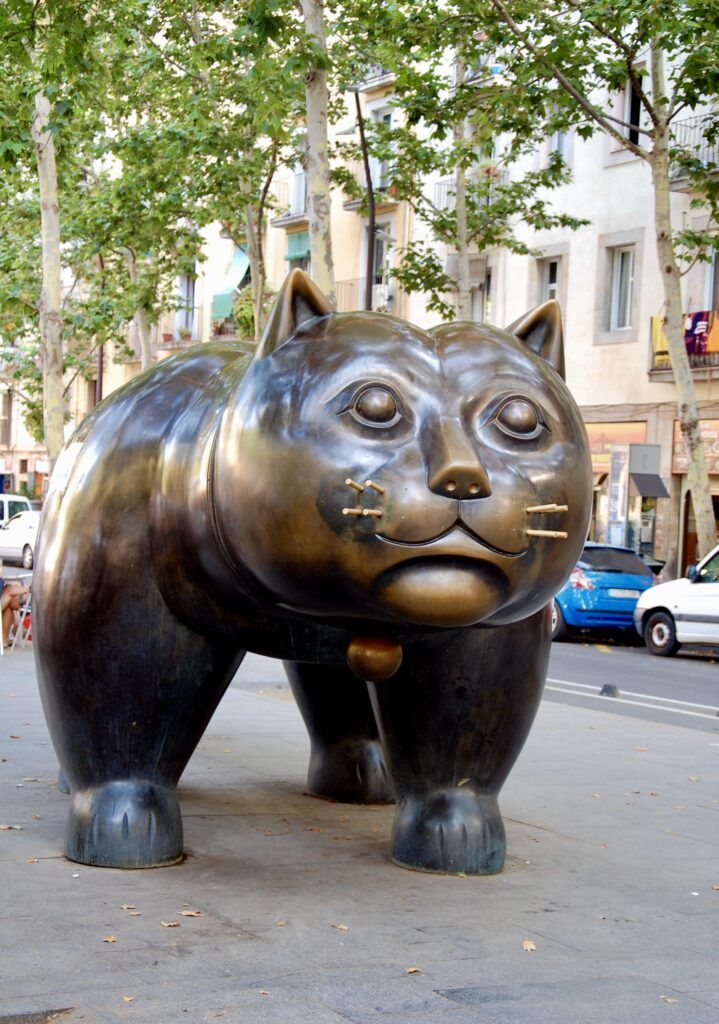
City Cards
Barcelona Card
The Barcelona Card is a comprehensive tourist pass that provides free access to many of the city’s public transport options and free entry to over 20 museums and attractions. It also offers discounts on numerous other attractions, cultural venues, entertainment, shops, and restaurants.
The key benefits of the Barcelona Card include:
- Unlimited free travel on public transport including metro, city buses, and trams.
- Free entry to many museums including the Miro Foundation and the MNAC
- Discounts on attractions such as Casa Batlló, La Pedrera, and many others. For some, you’ll still need to reserve a timed entry.
- Available in durations of 72, 96, or 120 hours to match the length of your stay.
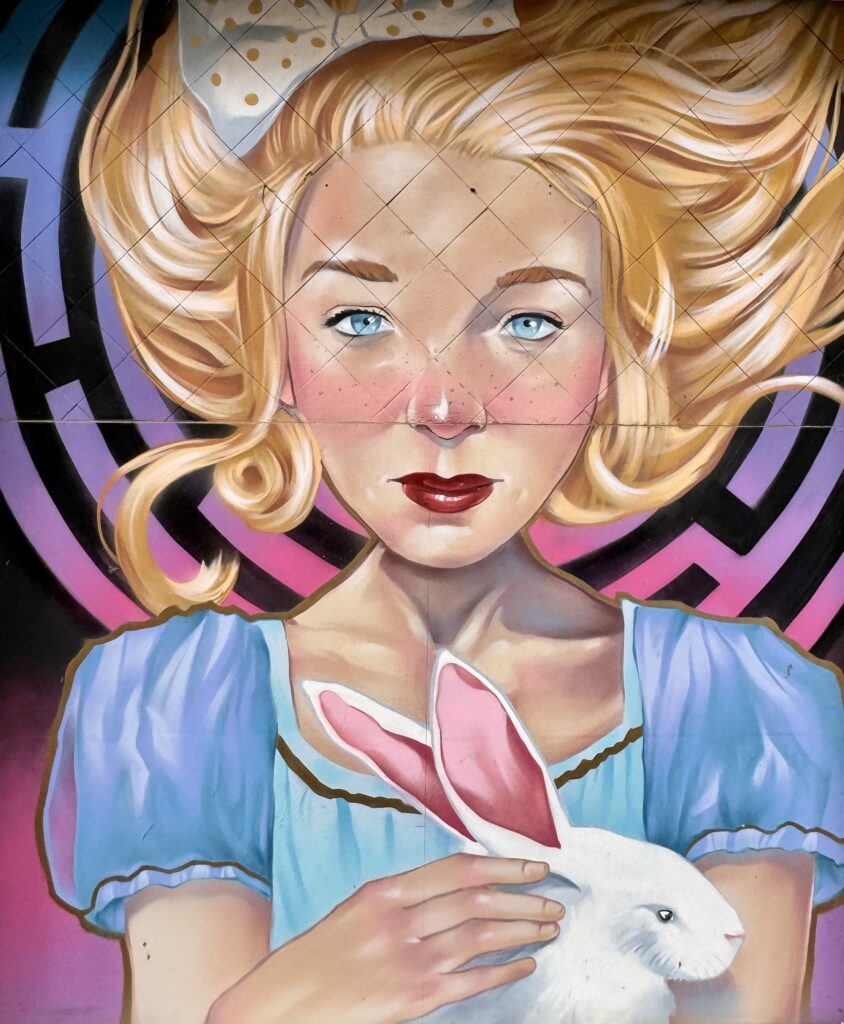
Barcelona City Pass
The Barcelona City Pass is a digital pass that includes pre-booked entry to some of Barcelona’s most popular attractions, along with the convenience of not having to pick up a physical ticket.
Key features include:
- Skip-the-line access to Sagrada Familia and Park Güell.
- Airport transfer (Aerobus from Barcelona Airport to city center and back).
- One or two-day Hop-on Hop-off Bus Tour.
- 20% discount on other popular attractions, museums, excursions, and more.
- Everything is managed online, with tickets sent directly to your email.
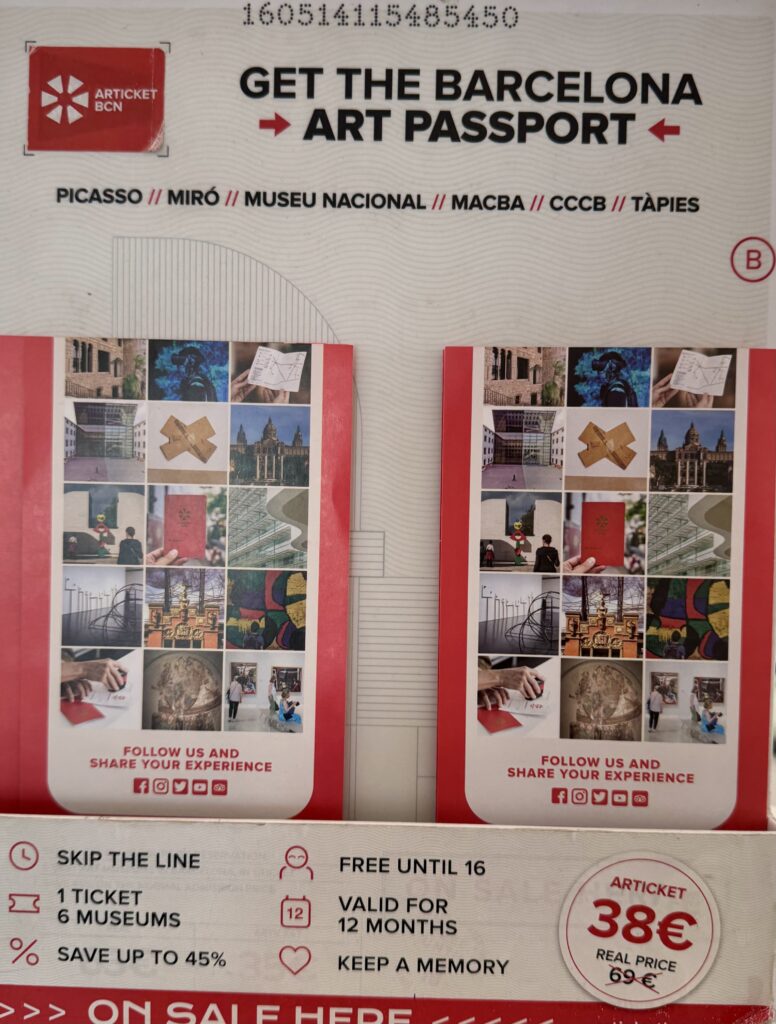
Barcelona Art Ticket
A third option, one which I used, is the Barcelona Art Ticket. It gives you free skip the line entry to six museums: Picasso, Miro, MNAC, MACBA, the Centre de Cultura Contemporània de Barcelona, and the Tapies Foundation.
Which To Choose?
- Barcelona Card is best for visitors interested in exploring a wide range of museums and enjoying unlimited public transport.
- Barcelona City Pass is great for first time visitors who are interested in seeing the major landmarks without the hassle of booking each one separately and who are using the hop on hop off bus.
- Barcelona Art Ticket is great if you want to see the best art museums in the city.
I hope you’ve enjoyed my tips and tricks for visiting Barcelona. You may find these other Barcelona travel guides useful:
- 1 day in Barcelona itinerary
- 3 days in Barcelona itinerary
- what to do in the Gothic Quarter
- hidden gems in Barcelona
- landmarks in Barcelona
- guide to Sagrada Familia
- guide to Casa Batllo
- guide to La Pedrera
- guide to Palau Güell
- guide to architecture in Eixample
Pin it for later.

